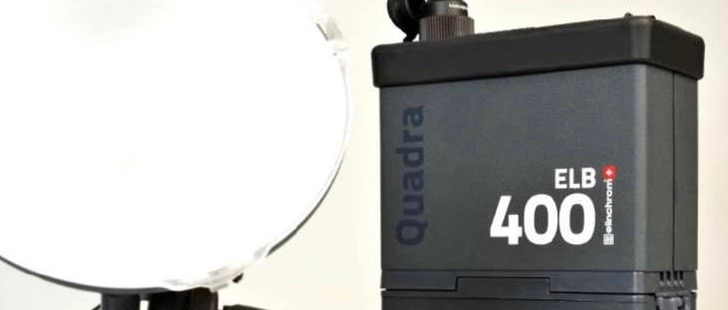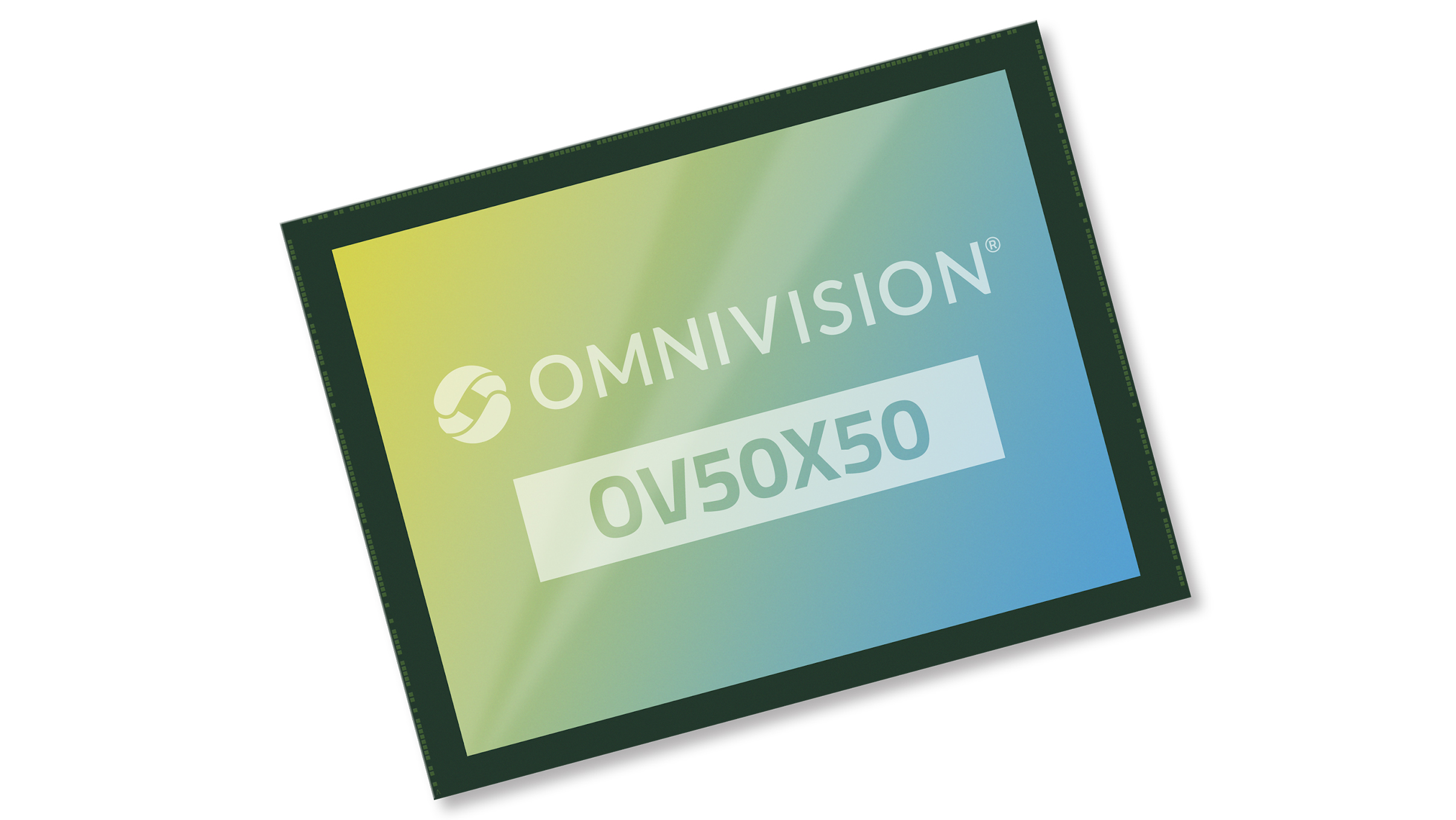Digital Camera World Verdict
Elinchrom is the affordable Swiss pro flash brand, and the Quadra system combines portability with power, but the ELB 400 is no longer the most compact solution for on-location lighting.
Pros
- +
Exposure and colour balance stability
- +
Fast recycling
- +
Short flash durations for freezing action
Cons
- -
No wireless TTL exposure control
- -
Power pack is still quite big
Why you can trust Digital Camera World
An indication of just how far the development of battery-powered studio flash packs has come is to compare Elinchrom’s original Ranger portable models with the latest version of its Quadra compacts. The size difference is very significant, as is the weight – even compared to the first incarnation of the Quadra, shaving off in the order of a kilogram – yet the Quadra ELB 400 still delivers up to 424 joules of flash power.
Maximum Power: 424 joules.
Guide Number/f-stop: f64.5 (48-degree reflector, ISO 100, one metre).
Number Of Outlets: Two.
Power Distribution: Asymmetrical 2:1.
Variable Power Output: 6.9 stops in 1/10, ½ or full-stop stop increments.
Flash Duration (t=0.5): 1/1200 – 1/2800 second (Output A at 100 percent).
Recycling Time: 1.6 seconds to 424 joules (fast mode).
Modelling Lamp: 20 watts LED (equivalent to 50 watts halogen with programmable timing).
Model Lamp Control: On/off, continuous and programmable timer.
Triggering: 3.5 mm sync connector, photocell/IR receiver, EL-Skyport (radio frequency).
This represents a pretty appealing combination of portability and flash power, not to mention the various enhanced capabilities that Elinchrom has given the ELB 400 and which are designed to increase its versatility when shooting, particularly in outdoor locations. As per the original Ranger philosophy, the ELB 400 has a ruggedized design, including very substantial rubberized bumpers along all exposed edges, a membrane-covered control panel, and stoppers for the flash head outlets, sync cable connection and microUSB port. With the battery pack fitted, the unit’s total weight is still a very manageable two kilograms, while the Quadra heads weigh in at a mere 280 grams. A two-head kit is available with its own custom hardcase (soft bag options are available) and the pleasant surprise is just how easy this is to carry around even over quite long distances… no need to go into training beforehand.
The battery itself is a 14.4 volts lithium-ion pack (thankfully gel cels are being consigned to history) with an improved capacity which now gives up to 350 flashes at full power. If you’re using a lower output this number now climbs into the thousands. Lithium-ion also allows for faster recharging… now just 90 minutes for a full tank. The battery unit clips quickly and easily to the base of the flash pack so if you are on a long shoot, the interruption while changing packs is minimal. The two-head kit includes a spare battery.
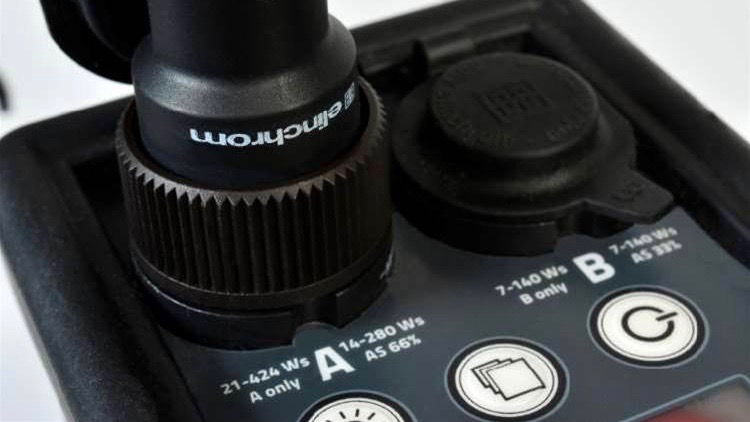
Power play
The ELB 400 has two flash head outlets with 2:1 asymmetrical power distribution. The flash power can be wound down all the way from 424 joules down to just 21 joules across the two outlets – or 14 from Outlet A and just seven at Outlet B.
When the Quadra Action head is used, the shortest flash duration is 1/2800 second at maximum power using Outlet A, but 1/4000 second when using two heads. It’s even shorter – at 1/5700 second – when using just Outlet B’s max power (i.e. 140 joules). Recycle times can be as short as 0.17 seconds. Exposure and colour balance stability are excellent across the full power range.
Clearly Elinchrom has Profoto’s B2 in its sights here, giving the ELB 400 similar sporting credentials for shooting fast-moving subjects. Auto dumping means lower power settings are re-adjusted virtually instantaneously. There’s a new, contrastier OLED-type display panel which includes a six-stage level indicator for battery power, but conveniently the batteries also have their own LED-type capacity indicators so this can still be checked when they’re off the pack. Despite the increased capacity, obviously battery power is still precious so there are a number of management options for setting stand-by and auto switch-off delays, the modelling lamps in the heads and the recycling time. A handy ‘Statistics’ display option shows the flash count (for monitoring tube life) and pack’s total running time.
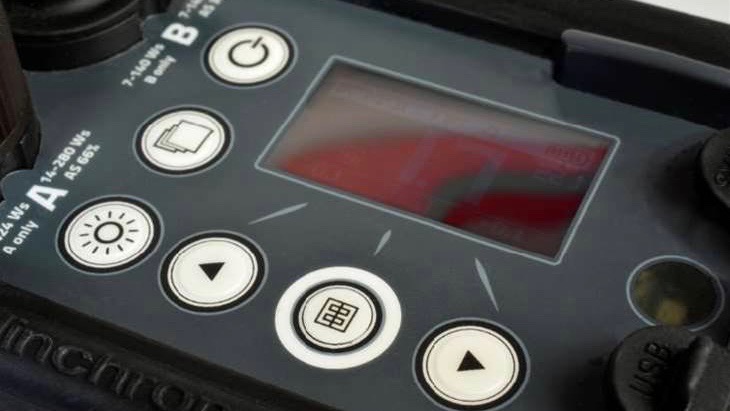
Operations are performed entirely via push-buttons with easier-to-navigate menus, and the ELB 400 also gets a new set of flash modes – strobo (from one to ten flashes per second for up to five seconds), sequence (up to 20 units) and delay (i.e. for second curtain sync). The standard cable and photocell sync options are provided (the latter adjustable for preflashing), but additionally Elinchrom’s EL-Skyport radio frequency receiver is built-in and provides up to 20 channels in four groups. The ELB 400 is supplied with an EL-Skyport Speed RF transmitter, which also allows for the remote control of power settings.
Importantly, the built-in receiver is compatible with the next-gen EL-Skyport Transmitter Plus which has an extended range of 200 metres, much-improved controllability, a tilt/swivel head and uses standard AA-size batteries (this transmitter is supplied in some of the kit options offered by distributor Kayell Australia).
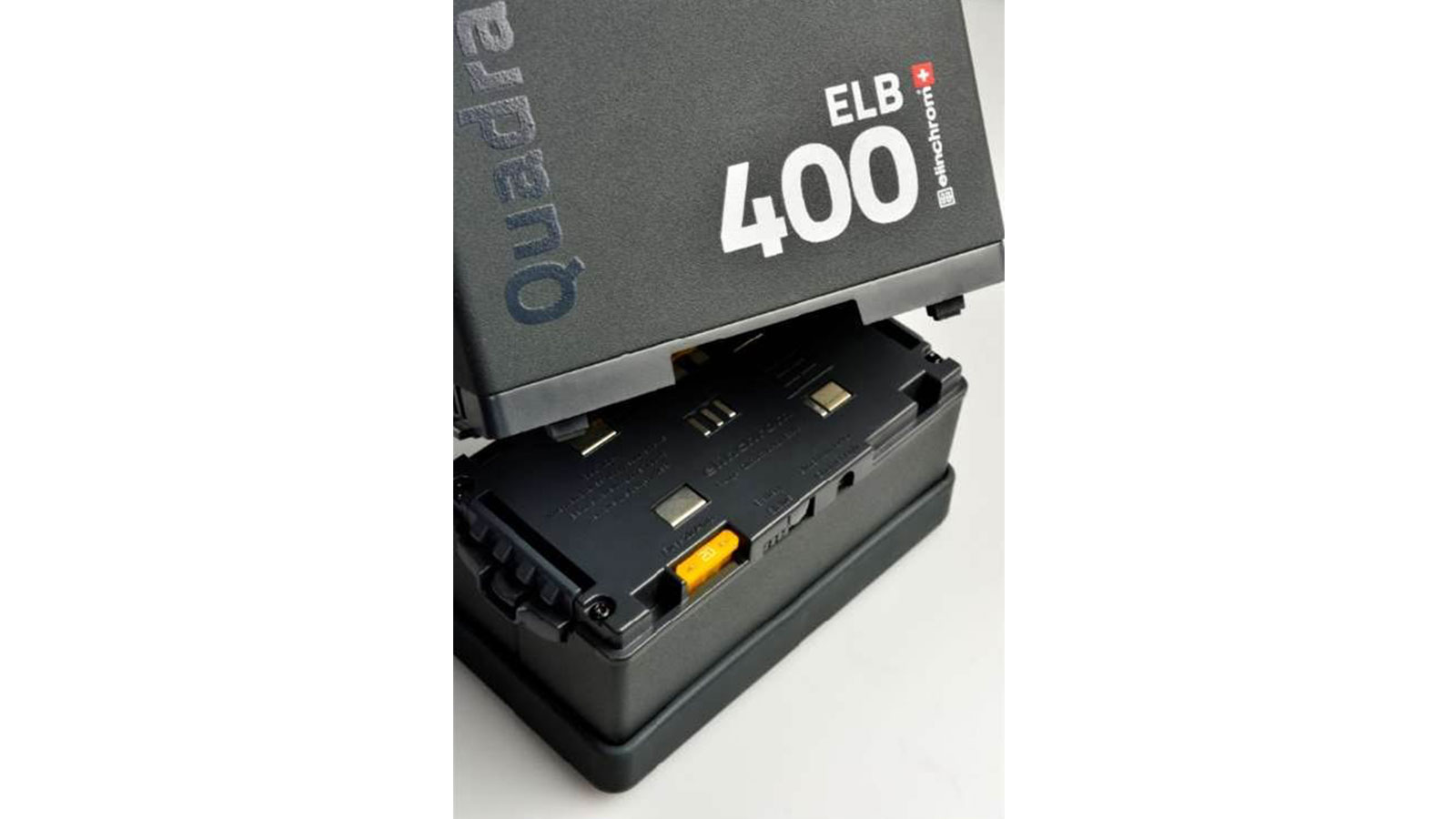
Heads up
As noted earlier, the Quadra flash heads are remarkable for their lightness of weight, and this is partially achieved by replacing the conventional halogen modelling lamp with an LED source. Rated at 20 watts, this is the equivalent of a 50 watts halogen lamp and its running time can be preset from the pack for durations of one to 60 seconds (the default is 15 seconds) or, more conveniently in some situations, left on continuously.
Flash tubes are user-replaceable and here there’s the choice of a standard Quadra Pro head or the Action head, which has a fully-circular tube for shorter flash durations up to 1/2800 second at full power. The Action head is not just for high-speed applications, it works with the latest leaf-shutter lenses in digital medium camera systems which allow for flash sync at speeds of up to 1/1600 (Phase One) or 1/2000 second (Hasselblad).
The Quadra heads have a shallow bayonet-fit reflector dish which, in turn, can be fitted with a clip-on diffuser (that also doubles as a protective cover). Alternatively, an adaptor ring – which also incorporates a reflector – can be fitted to provide compatibility with Elinchrom’s standard range of light-shaping accessories.
Verdict
While the ELB 400 is smaller, lighter and faster than its predecessors, it’s still more of a dual-purpose unit than, say, the Profoto B2. While the latter offers the distinct advantage of TTL exposure control, it’s primarily designed for the great outdoors and, more specifically, shooting action with very short flash durations. Thanks to its higher power (and hence wider output range) and increased battery capacity, the Elinchrom pack works equally as well on location or in the studio. The capacity to fit standard accessories also helps in the latter situation while, in addition to the sheer portability, the availability of extension cables (up to ten metres in length) further increases its potential versatility in the former. The pricing is also competitive.
Profoto is currently the big deal in this sector because of the sheer convenience of having TTL exposure control, but the Elinchrom ELB 400 still represents a viable alternative to both the B1 and B2. It’s much more powerful than the B2 and more flexible in a multi-light set-up than a pair of monobloc-style B1s. It’s also very easy to use with a realistic battery life, fast flash durations at useful power levels, and convenience features like being able to run the modelling lamps for as long as they’re needed. As a highly capable all-rounder in portable professional lighting, the Elinchrom ELB 400 is hard to beat.
Read more
The best photography lighting kits in 2020
